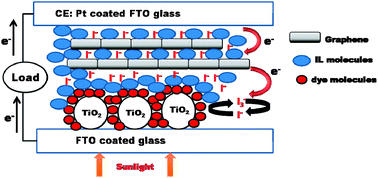Graphene, carbon nanotube and ionic liquid mixtures: towards new quasi-solid state electrolytes for dye sensitised solar cells
Abstract
In this work carbon based nanomaterials in

- This article is part of the themed collection: Self-organisation of nanoparticles

 Please wait while we load your content...
Please wait while we load your content...